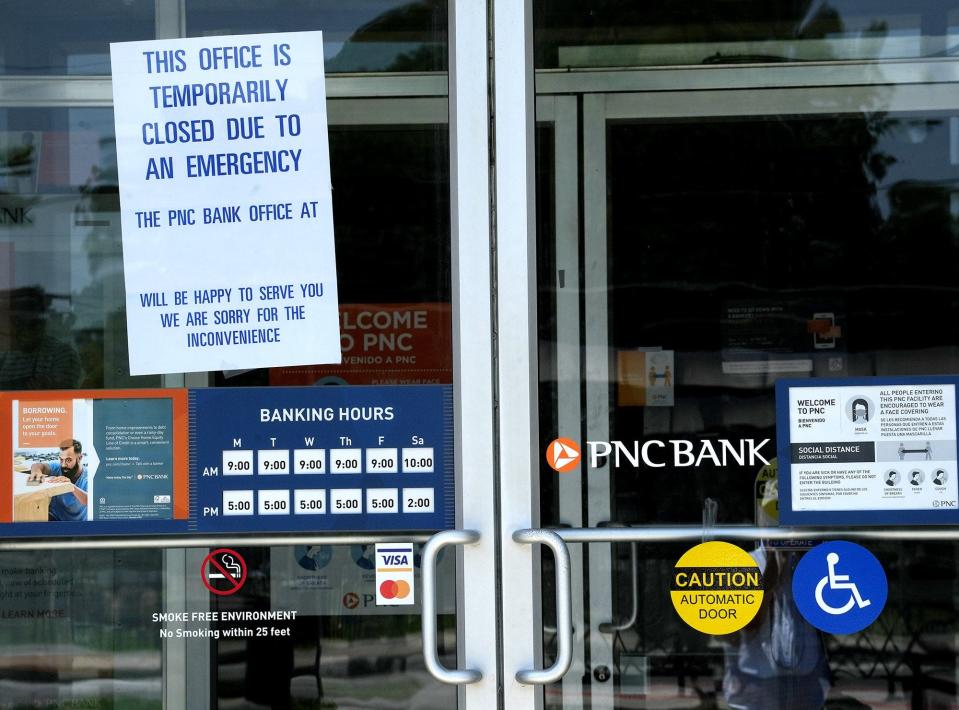Opinion: 'AEP’s draconian shutoffs' unacceptable. 7 things leaders should do to get serious

Recent unfortunate events experienced by AEP customers show how global warming, which produces destructive storms and heat waves, created conditions for widespread power losses.
Continued reliance on fossil fuels escalates these impacts.
More: Letters: Put the heat on AEP and PUCO for power outages. Investigate and fine them.

Solutions that reduce demand on the system and save customers money are available and they don’t have to include AEP’s draconian shutoffs to homes and businesses.
These solutions have existed for years. The failure of the Public Utilities Commission of Ohio to require and for AEP to implement them is irresponsible. These options include:
More: Letters: Extreme weather will continue to cause problems. Climate change is the culprit.
1. Repeal HB 6

That would end the customer subsidy of two uneconomic coal plants and restore the energy efficiency requirements that were discarded to finance the coal plant subsidies. Overall stress on the system is reduced when customers use less energy.
This plain common-sense fact has eluded the legislature for too long.
More: Ohio's House Bill 6 corruption case: 'It's all systems go,' former federal prosecutor says
Energy efficiency is the least cost solution, cheaper than any power plant. Why would we not do it?
It reduces system costs for the utility and saves customers money on their bills. If energy efficiency programs had not been terminated by the legislature, the system demand would have been less and fewer, if any, customers may have been shutoff.
2 Get to the bottom of it
PUCO should convene a real investigation geared towards solutions.
Calling in AEP and PJM Interconnection to explain is inadequate.
Call in the state and national experts on Demand Response Programs to discuss programs AEP can and should implement to reduce system demand during peak periods.
Demand Response Programs compensate customers for using less during peak times with little impact on their comfort.
The compensation paid to the customers is less than the cost of the utility acquiring additional power during high demand.
More: AEP Ohio intentionally shut off power to some Greater Columbus neighborhoods. Here's why
3. Use technology

With its smart meters, AEP can establish and widely publicize, voluntary, well-designed time-of-use rates where customers pay less during defined off-peak times and more during on-peak.
Studies by Oklahoma Gas and Electric and Sacramento Municipal Utility showed that customers, including low-income, saved money on these rates.
4. Offer proven programs
In 2013 and 2014, AEP ran a successful Residential Real-time Pricing demonstration program that achieved reductions in average customer bills, and fostered positive consumer satisfaction.
Customers were guaranteed that their annual bill would be no greater than if they were on the flat-rate tariff, but if they shifted consumption from high-price periods to low-price periods they could save money. This program should be offered again.
5. Use the Peak-Time-Rebate program
5. Under the program, AEP asks customer to reduce consumption and those that choose to participate, get compensated. There is no penalty for non-participation.
6. Cycle down air-conditioning
Smart thermostats in a home or business work to automatically make small modifications to temperature settings during peak periods without sacrificing customer comfort. Cycling down air-conditioning across the service territory for short intervals during critical periods, could help avert forced service shutdowns.
7. Get serious
Industrial curtailment programs offer industrial customers a year-round rate reduction in exchange for the utility being able to curtail load during critical times.
Many more tested programs exist across the nation that can reduce demand, save customers money and avoid future shutoffs and the damage it causes customers.
If our leaders are serious about protecting customers, assuring grid reliability and making energy more affordable, they will require all Ohio utilities to implement a portfolio of these and similar programs.
To do otherwise is derelict.
Janine Migden-Ostrander is an Institute for Energy Democracy Fellow at Pace University’s Law School, Energy and Climate Center and also teaches a course on Grid Modernization at the Clean Energy Legislative Academy. She is the former Ohio Consumers’ Counsel.
This article originally appeared on The Columbus Dispatch: What leaders can do to avoid AEP shutoffs, protect customer| Opinion

